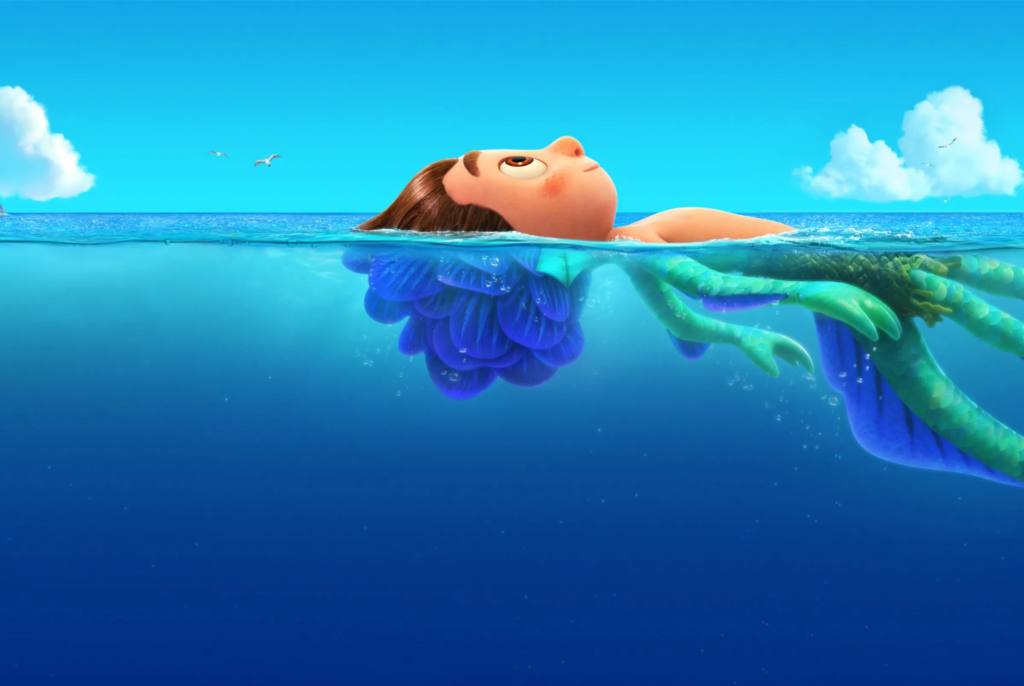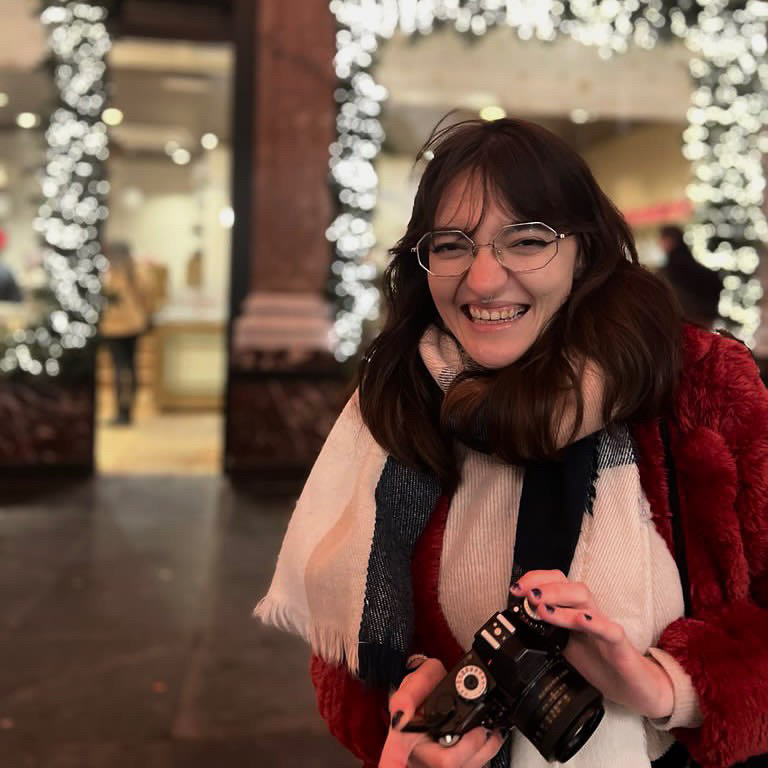While watching Luca a few months ago, I had this realization that the ocean is used as a metaphor of coming out and being queer. Let’s dive into the thought process behind that realization.
Luca, the acclaimed Pixar animated feature

This film is the story of a sea monster boy who is convinced by another sea monster boy, Alberto, to step on land. This is strictly forbidden by Luca’s parents. Although sea monsters assume human forms when dry, one drop of water is enough to reveal their true form. In the town they live, sea monsters, albeit only a legend to the humans, are seen as dangerous. They are hunted and overall misunderstood by the land people.
When the movie was released, a lot of people pointed out that Luca was a metaphor for coming out, and the hostility that comes with taking the step. Luca’s parents try to convince him to stay underwater, stay hidden from the eyes of others. This is what the LGBTQ+ community has often been told throughout time. When he befriends Alberto, he becomes more comfortable in the idea of being out of the sea. He even does as far trying to integrate into the town that wants them dead.
Later in the film, Luca betrays Alberto by outing him to the town people — acting out of fear of being discovered himself. This breaks Alberto’s heart, who sees it as a breach of trust more than Luca saving himself. Towards the end, Luca makes the decision to save his friend Alberto, even though it is storming and he will reveal himself if he does. It sends a message that with love and community, we become stronger to adversity.
“Casual” by Chappell Roan, a Tale of Modern Dating
The story-telling of the song “Casual” by Chappell Roan is one almost every sapphic knows. Seeing this person and acting like a couple together, while they insist that it’s only casual, that they’re not looking for a relationship. Chappell took it to the next level with the music video. A girl who goes to the sea a lot finds this mermaid as she feeds on men. The mermaid approaches her and Chappell’s character shows that she’s not afraid and takes her home. They develop a relationship behind hidden doors. Chappell’s character even takes the time to decorate the room for the mermaid to resemble the sea, but the mermaid then leaves and never returns to her.
Now, how does it correlate with the ocean being the metaphor? In the beginning of the video, before the two even meet, a stranger with his face bloody tells Chappell’s character to “stay away from the water”. Already there, it’s a warning to not act upon sapphic desire, the ocean standing in as the place where the forbidden resides.
While the mermaid is terrifying to others, Chappell shows gentleness towards her. She cleans her face of blood, letting her sleep on her lap as she fantasizes about living with her underwater. She is willing to give it all up for this creature who didn’t express the same towards her. When they separate at the end of the day, the ocean becomes the place Chappell’s character longs for, as she stares at her lover leaving.
During one scene, they’re sitting on a bench just by the sea, when Chappell lays her head on the mermaid’s shoulder. The mermaid looks around and sees these fishermen look at them weirdly, so she pushes Chappell off her shoulder. It is obvious this is not a relationship that can survive outside the water or outside the house, for it will be met with judgment. At the same time as the mermaid takes into account everyone else’s opinion, the lyrics continue to consider a life where they’d be together and they wouldn’t have to hide.
Following up the scene at the pier, the mermaid is in the pool. Chappell’s character tries to take a picture of her, to which the mermaid shoves away the camera. She gets closer to Chappell’s face, then proceeds to drag her in the water. Here, we witness them kiss and take off each other’s clothes. The water becomes the only place where they can exist together, with the affection and desire they hold for each other.

Throughout the video, we see Chappell trying to adapt more and more to the mermaid’s environment, by wearing clothes inspired by the sea, and even decorating her room to make the mermaid feel more comfortable in her space. When the mermaid sees that, she realizes how deep Chappell’s feelings run, and she leaves. In the underwater fantasy Chappell’s character has throughout the story, she breaks everything in a rage episode after the mermaid leaves. In her reality though, she takes off the decorations with the same gentleness we’ve seen her show the creature. This hints towards the fact that inside, Chappell’s character knew they wouldn’t last, but she still had hope they’d find a middle ground where they’d be allowed to be together.
At the end of the video, Chappell returns to the pier, where she sees the mermaid with another man in the waves of the sea. The ocean is represented here as a hostile environment, but to this sapphic relationship, it is the only place where they could exist if one of them wasn’t scared of the intensity of the relationship, and what being into women could mean for her.
Mermaids Killing Men, Not Women?
Everyone has heard about mermaids and sirens luring men to their death by singing, or simply by being beautiful creatures. How come we never hear of women being lured to such a death?
If we take as an example the “Casual” music video, we see that men often end up bloody at the hands of the mermaid. However, Chappell, who is the only other woman-like character, doesn’t. This isn’t just a singular case of fiction where women are spared, but more an observation that leads to questioning. There are multiple legends about men being killed by mermaids, but none about women. It leaves me wondering if that is because the creatures are half-women themselves and find a certain comfort in their human acolytes, or if there is something inherently queer about the decision to let women survive?
The Ocean, a Refuge Away from the World
We’ve covered the underwater kiss in Chappell Roan’s “Casual” music video, but it is not the only occasion where queer people find comfort in an environment that is designed to suffocate them.
Booksmart
In the coming-of-age film directed by Olivia Wilde, Amy (Kaitlyn Deaver) is a young lesbian who struggles to fit in and talk to people. During the mid-point of the film, Amy follows her crush Ryan to the pool and takes a leap into the water. Director Olivia Wilde explains the moment as being “transformative” for Amy’s character. Amy loses the weight that was on her shoulders when she’s underwater, and finds liberation within herself. After resurfacing once, this gives her the push to go back under the water to find Ryan, her love interest. What she discovers underwater is her crush kissing another person, and not just that, Ryan is kissing a man. When Amy resurfaces again, she is heartbroken by her discovery.
Moonlight
Moonlight itself has water as one of its biggest symbols. The story follows Chiron (Alex R. Hibbert, Ashton Sanders, Trevante Rhodes), a young boy, as he grows into a young adult, then a man. The sea is present throughout every stage of his life — as he learns to swim with his paternal figure Juan (Mahershala Ali), then as he discovers his sexuality on the beach facing the ocean. Water represents a rebirth and knowledge of one’s self, which brings us to the pressing question again — what is it about the ocean that makes LGBTQIA+ people feel understood? Water, while comforting, is undeniably powerful as it can bring the ending of a life. That is another light that queer people have been represented in.
Bodies of Water, Bringers of Death?
This is more broad as we won’t speak about the ocean, but about other bodies of water, such as lakes and rivers. There have been running jokes inside the lesbian community that we should stay away from the water, as we’ve seen lesbian characters find their end there. However, I don’t feel that’s quite right. In both cases I will mention, it is not the water that causes their death, but rather serves as a permanent resting place. Which has its own issues on itself, given what we’ve discussed about the ocean being a metaphor for remaining hidden, but we’ll get back to that later.
The Haunting of Bly Manor

In the Haunting of Bly Manor, our protagonist Dani (Victoria Pedretti) is a lesbian that becomes an au-pair in the English countryside to two children. There, she falls in love with Jamie (Amelia Eve), the gardener on the grounds. Dani has to sacrifice herself in order to save the children from a ghost in the lake that wanted to take them. The curse doesn’t become effective immediately, with Dani and Jamie getting to have their own place and flower shop in America.
We witness their relationship during five years, with the looming threat of the curse over them. After an incident where Dani gets briefly possessed by the lady in the lake, she wakes up to almost killing Jamie in her sleep. That is when she makes the decision to leave, and take the ghost’s place in the lake. It is heartbreaking, but it weaves the story in a way that makes sense and doesn’t fall into homophobic tropes.
Killing Eve

Killing Eve follows the story of Eve Polastri (Sandra Oh), a detective trying to catch serial killer Villanelle (Jodie Comer). In the process she falls in love with her, and the other woman does as well. After seasons of back and forth filled with yearning and tension, we see their relationship come to fruition in the last season. However, their reunion doesn’t last long. The person that Eve used to work under finds them and shoots Villanelle in front of Eve. Villanelle falls into the River Thames. Eve jumps in and tries to save her, but doesn’t succeed as Villanelle sinks to the bottom. We see the heartbreaking moment where they reach for each other’s hand, but they can’t be together.
These two examples aren’t exactly homophobic in their nature, they are part of a bigger narrative. It is still heartbreaking. Lesbians find their ending in the place that serves as a metaphor for the closet. Having them sink to the bottom of a body of water almost serves as a punishment for being queer. Essentially, their permanent place of residence is a place known for the secrecy it holds.
In Conclusion
The ocean is a metaphor for the queer experience. Whether it’s seen through a positive or negative lens, there’s no denying how poetic it is. For the longest time, LGBTQIA+ people have felt alienated from our peers, not unlike a creature of the sea. The oddness we share gives us the word “queer”. It’s a word that at first was against us, but that the community reclaims. The ocean in itself is a place that we find comfort in. It’s roots it holds in secrecy and identification, but remains an environment that is hostile and has the capacity to kill us slowly if one finds itself in it for too long.





One thought on “The Ocean, A Metaphor for Queer People”
Comments are closed.